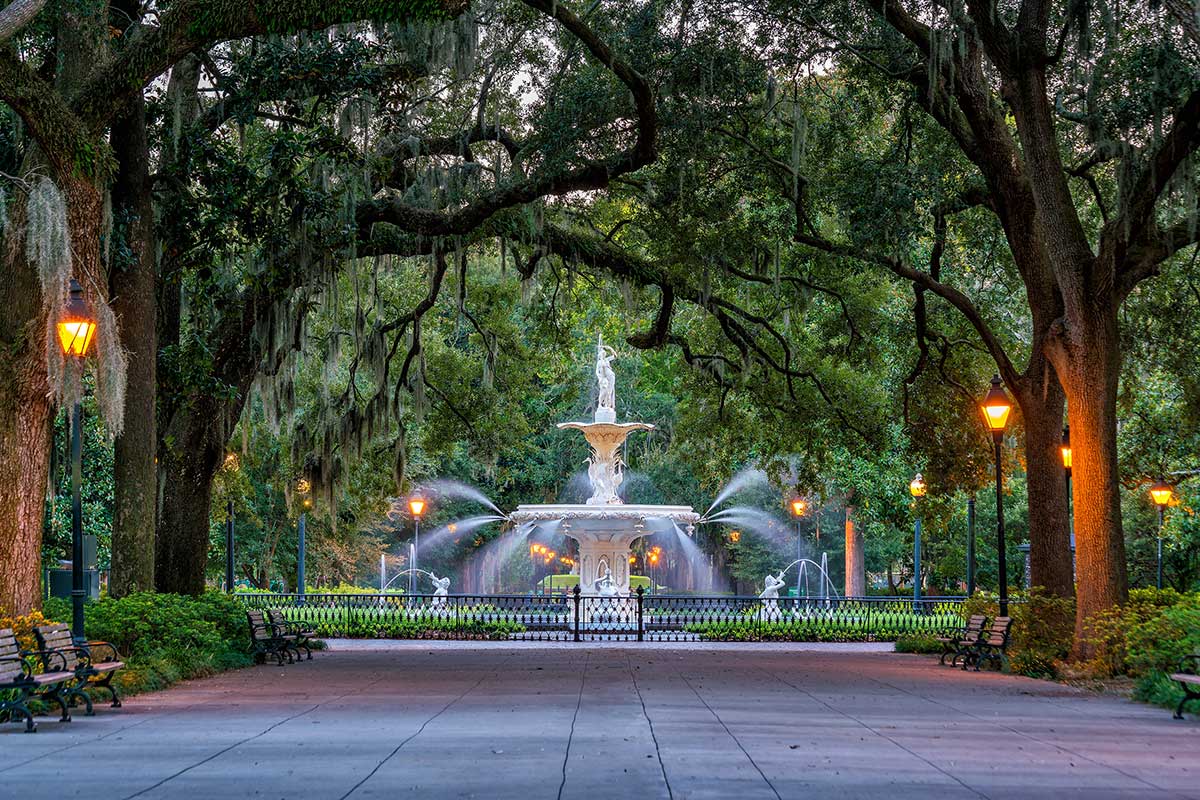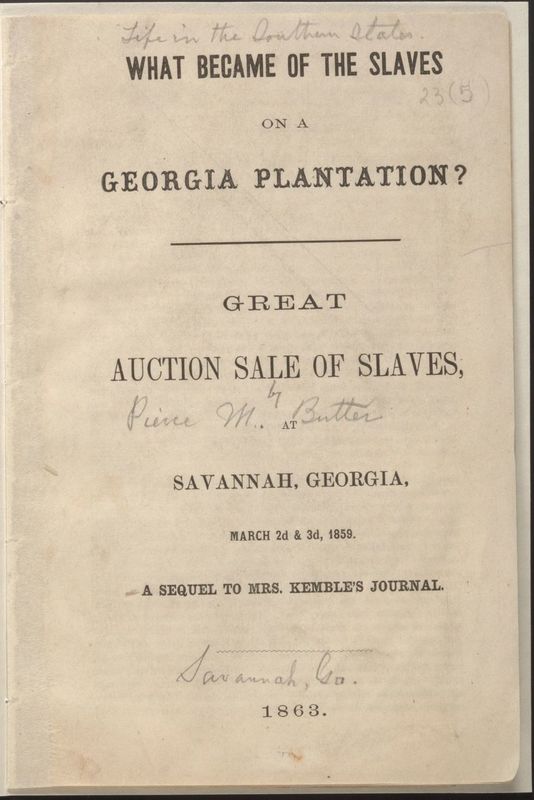"What Became of the Slaves on a Georgia Plantation?"
This account includes detailed records of the process of slave trading in Savannah, Georgia, as well as various stories to enhance the context. The amounts the owners paid for the slaves are also included, giving readers a sense of how lowly the African Americans were treated and merely sold as objects or animals. To most Southerners, slaves were taken to represent part of their property, simply the means to an end. Unfortunately, the slave owners created a reputation for themselves of being cruel, unkind, and selfish. At the end of the entry, it says, “the scene was as calmly sweet and quiet as if Man had never married the glorious beauties of Earth by deeds of cruelty and wrong” (Doesticks, 20). This statement implies the contrasting elements between the natural way of life and the ways of slavery. Here, slavery is categorized as wrong from a moral standpoint, but it was right in the sense that it was legal during that time period. Being a slave is not the purpose of an individual and should not define one’s future. This particular artifact preserves the historical integrity of what happened in the southern slave industry.
To those who look at the past through retrospective lens, slavery comes across as how certain races, specifically African Americans, were marginalized and used to the advantage of Caucasian plantation owners. In Savannah, cotton was an integral part of providing jobs for the slaves. “By the end of the antebellum era, close to 70 percent of America’s slaves lived in the rural Deep South, and most of them were involved in the production of cotton” (Berry, 42). The cotton industry paved the way for other industries to flourish, and “Savannah’s Cotton Exchange became the center of the world cotton market” (Chepesiuk, “History of Savannah, Georgia”). While the men were utilized to work the cotton fields, the women were seen trading in the markets. The marketplace influenced the way fresh food was sold, and “enslaved women in and around Savannah utilized customary African skills in the local market to gain a modicum of freedom and to establish themselves as an integral part of the urban economy” (Berry, 55). Although slavery typically has negative connotations associated with it, the slaves seemed to find ways to be successful despite their situations; however, the fact that slavery is immoral still holds true.
Works Cited
Berry, Daina Ramey, and Leslie M. Harris. Slavery and Freedom in Savannah. University of Georgia Press, 2013. EBSCOhost, proxy-remote.galib.uga.edu/login?url=http://search.ebscohost.com/login.aspx?direct=true&db=nlebk&AN=650629&site=eds-live
Chepesiuk, Ron. “History of Savannah, Georgia.” Salem Press Encyclopedia, 2015. EBSCOhost, proxy-remote.galib.uga.edu/login?url=http://search.ebscohost.com/login.aspx?direct=true&db=ers&AN=100259805&site=eds-live
Doesticks, Q. K. Philander, Pierce Butler, and Daniel Murray Pamphlet Collection. "What became of the slaves on a Georgia plantation?: great auction sale of slaves, at Savannah, Georgia, March 2d & 3d,: a sequel to Mrs. Kemble's journal." [S.l.: s.n, 1863] Pdf. Retrieved from the Library of Congress, www.loc.gov/item/11003986/

